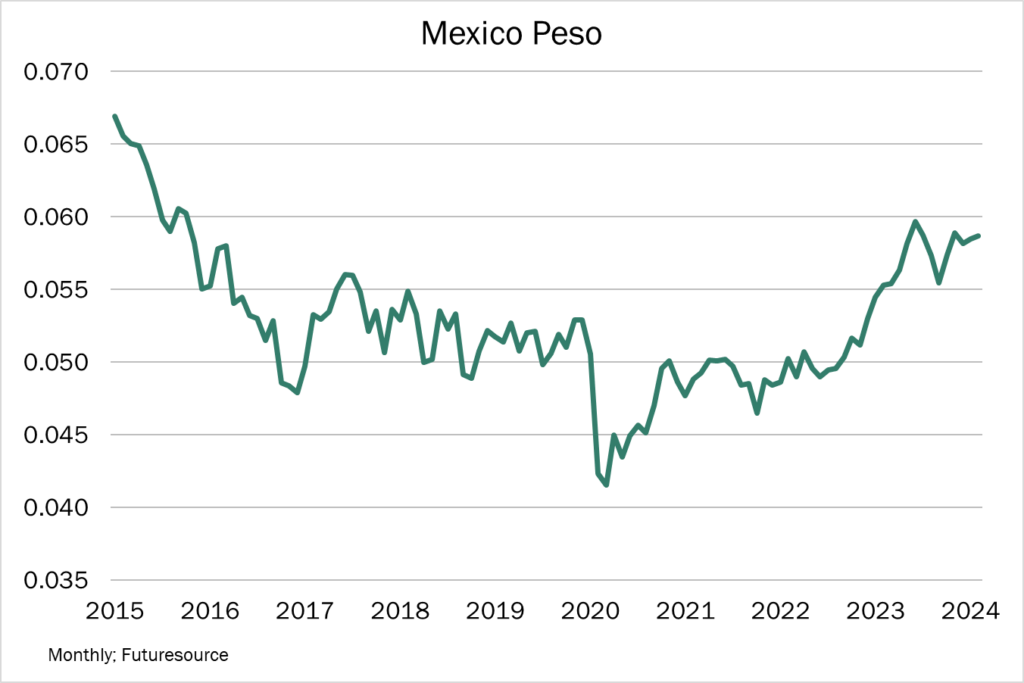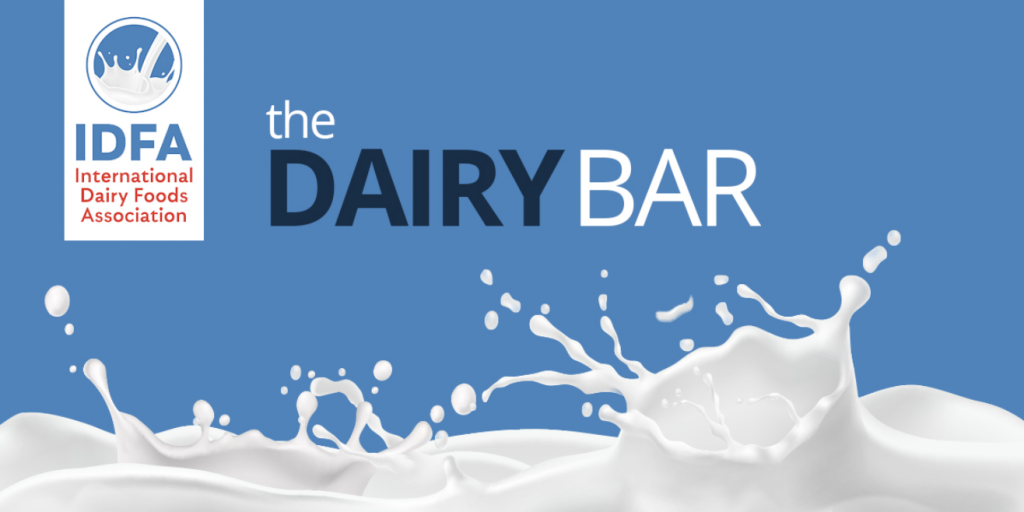Read the latest issue of The Dairy Bar, a bi-weekly report from IDFA partner Ever.Ag. The Dairy Bar features spotlight data, key policy updates, and a one-minute video that covers timely topics for the dairy industry.
The Dairy Bar: U.S. Milk Production Dips 1.1% YOY, Strong Mexican Peso Could Fair Well for U.S. Dairy Exports, and Fluid Milk Sales in a Minute!

Quick Bites: Show Me the Peso
- Continued strength in Mexico’s currency could be good news for U.S. dairy exports. As of early March, the peso was flat year-to-date and up 6% year-over-year, due largely to higher interest rates and foreign investments. As some American companies in other sectors look to move manufacturing to countries like Mexico over China, there may be increased strength in the peso moving forward.
- However, the stronger peso hurt Mexico’s exports in the fourth quarter of 2023, as a pricier peso made the country’s goods more expensive. As a result, the Banxico, Mexico’s central bank, is reportedly considering monetary easing.
- In the meantime, America’s southern neighbor could pick up more U.S. dairy, as the peso gives Mexico more spending power. Indeed, cheese exports to the country increased 20% year-over-year in 2023, while NDM shipments rose 16%.
Today's Special
- U.S. milk production fell 1.1% year-over-year in January, the largest contraction since 2022. Declines continued in the Southwest (-5.9%), where shrinking cow numbers – particularly in New Mexico – are cutting into output. Production also declined in the Northeast (-1.1%), Pacific Northwest (-2.0%) and California (-0.1%), though that was the Golden State’s smallest drop in a year.
- The U.S. herd also saw sharp reductions, falling to 9.325 million head, down 23,000 on the month and -76,000 year-over-year. That was slightly surprising, as dairy cow slaughter rates declined by roughly 14% in December. However, USDA pegged 2024 heifer inventory down 0.4% on the year, on top of a 0.5% reduction to 2023 data, to the lowest point since 1998.
- It’s unlikely much growth is ahead. Lower milk prices are squeezing on-farm margins, and producers are reporting smaller paychecks. At the same time, beef prices are up, encouraging farmers to cull their herds. And, the number of heifers expected to calve this year fell to the lowest level since 2004.
- Output is also down in Europe, where unfavorable weather, high feed costs and environmental regulations are hammering producers. EU-28 production fell 0.3% year-over-year in December, fueled by drops in key regions like Ireland (-27.1%), Germany (-0.4%) and France (-0.3%).
- Meanwhile, an El Niño weather pattern is chipping into New Zealand’s production. Milk flows decreased 1.2% year-over-year on a tonnage basis in January amid lower grass quality. But some reports point to good pasture growth, which could augur output in the months ahead.

